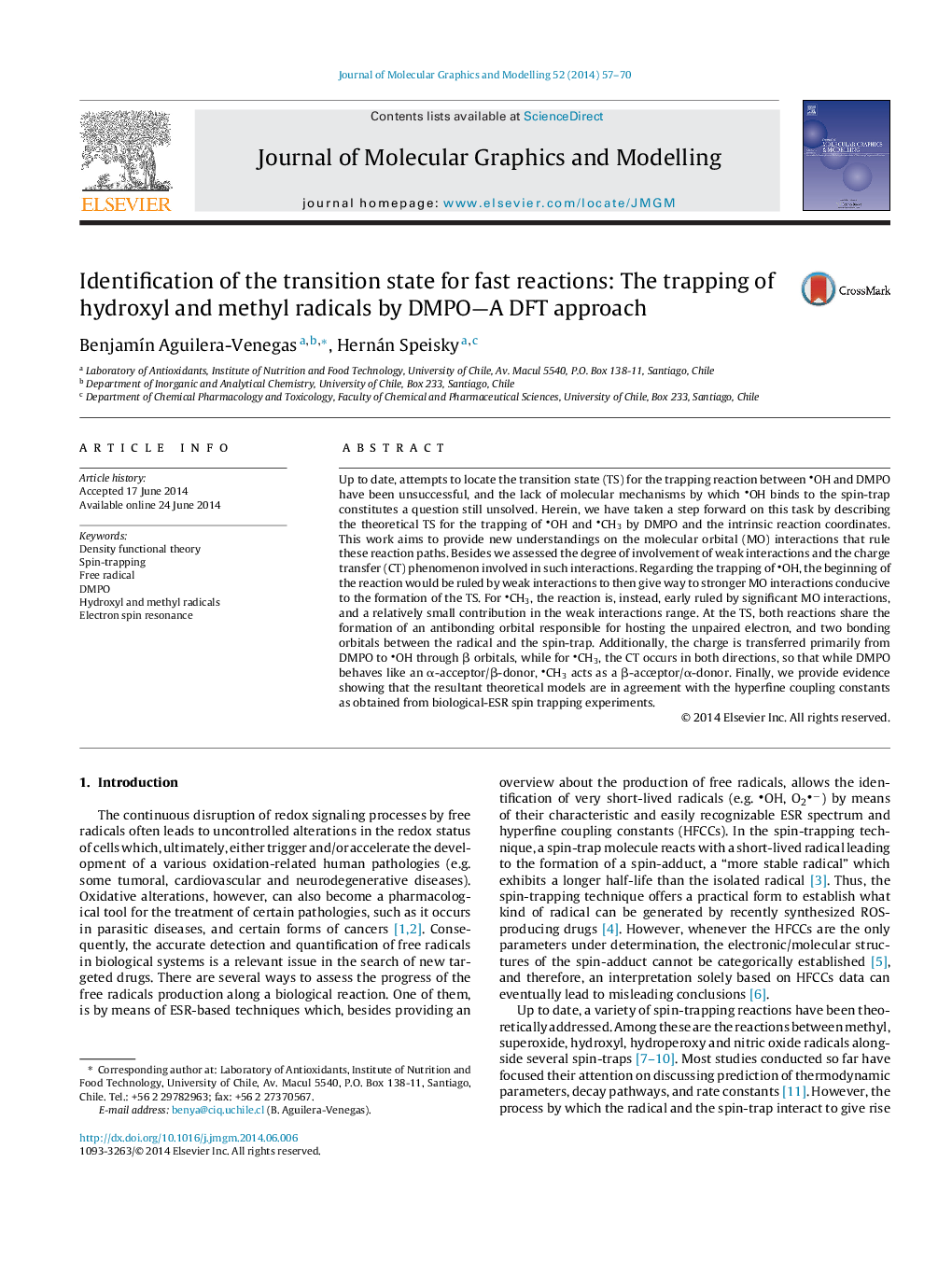| کد مقاله | کد نشریه | سال انتشار | مقاله انگلیسی | نسخه تمام متن |
|---|---|---|---|---|
| 443331 | 692706 | 2014 | 14 صفحه PDF | دانلود رایگان |

• The trapping reactions of OH and CH3 by DMPO were theoretically studied.
• The transition structures [DMPO⋯OH]≠ and [DMPO⋯CH3]≠ were found.
• Molecular orbital interactions were analyzed throughout the reaction.
• Weak interactions and charge transference phenomena were analyzed along the IRC.
Up to date, attempts to locate the transition state (TS) for the trapping reaction between OH and DMPO have been unsuccessful, and the lack of molecular mechanisms by which OH binds to the spin-trap constitutes a question still unsolved. Herein, we have taken a step forward on this task by describing the theoretical TS for the trapping of OH and CH3 by DMPO and the intrinsic reaction coordinates. This work aims to provide new understandings on the molecular orbital (MO) interactions that rule these reaction paths. Besides we assessed the degree of involvement of weak interactions and the charge transfer (CT) phenomenon involved in such interactions. Regarding the trapping of OH, the beginning of the reaction would be ruled by weak interactions to then give way to stronger MO interactions conducive to the formation of the TS. For CH3, the reaction is, instead, early ruled by significant MO interactions, and a relatively small contribution in the weak interactions range. At the TS, both reactions share the formation of an antibonding orbital responsible for hosting the unpaired electron, and two bonding orbitals between the radical and the spin-trap. Additionally, the charge is transferred primarily from DMPO to OH through β orbitals, while for CH3, the CT occurs in both directions, so that while DMPO behaves like an α-acceptor/β-donor, CH3 acts as a β-acceptor/α-donor. Finally, we provide evidence showing that the resultant theoretical models are in agreement with the hyperfine coupling constants as obtained from biological-ESR spin trapping experiments.
Figure optionsDownload high-quality image (434 K)Download as PowerPoint slide
Journal: Journal of Molecular Graphics and Modelling - Volume 52, July 2014, Pages 57–70